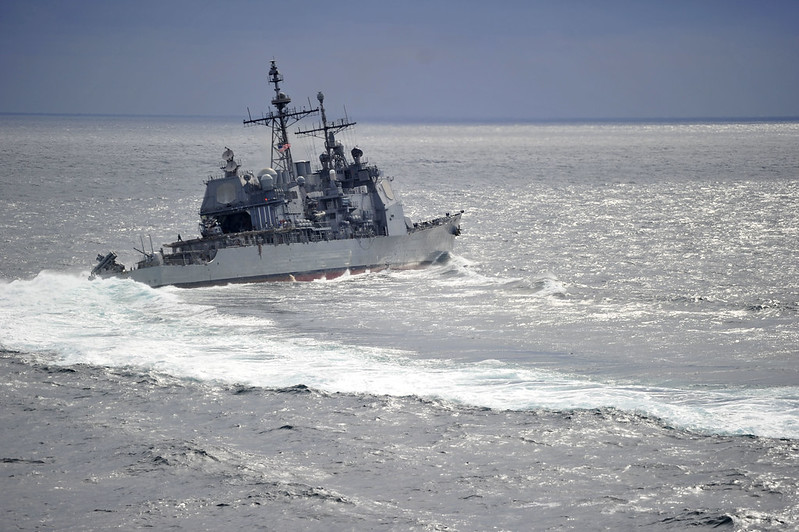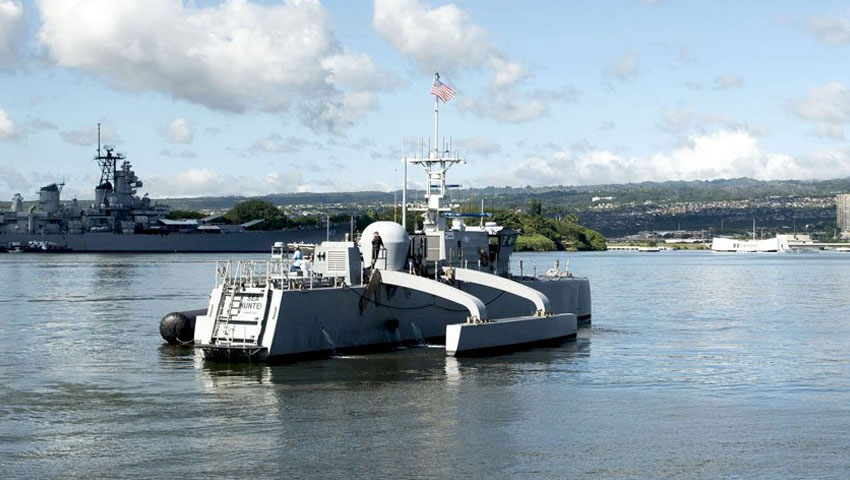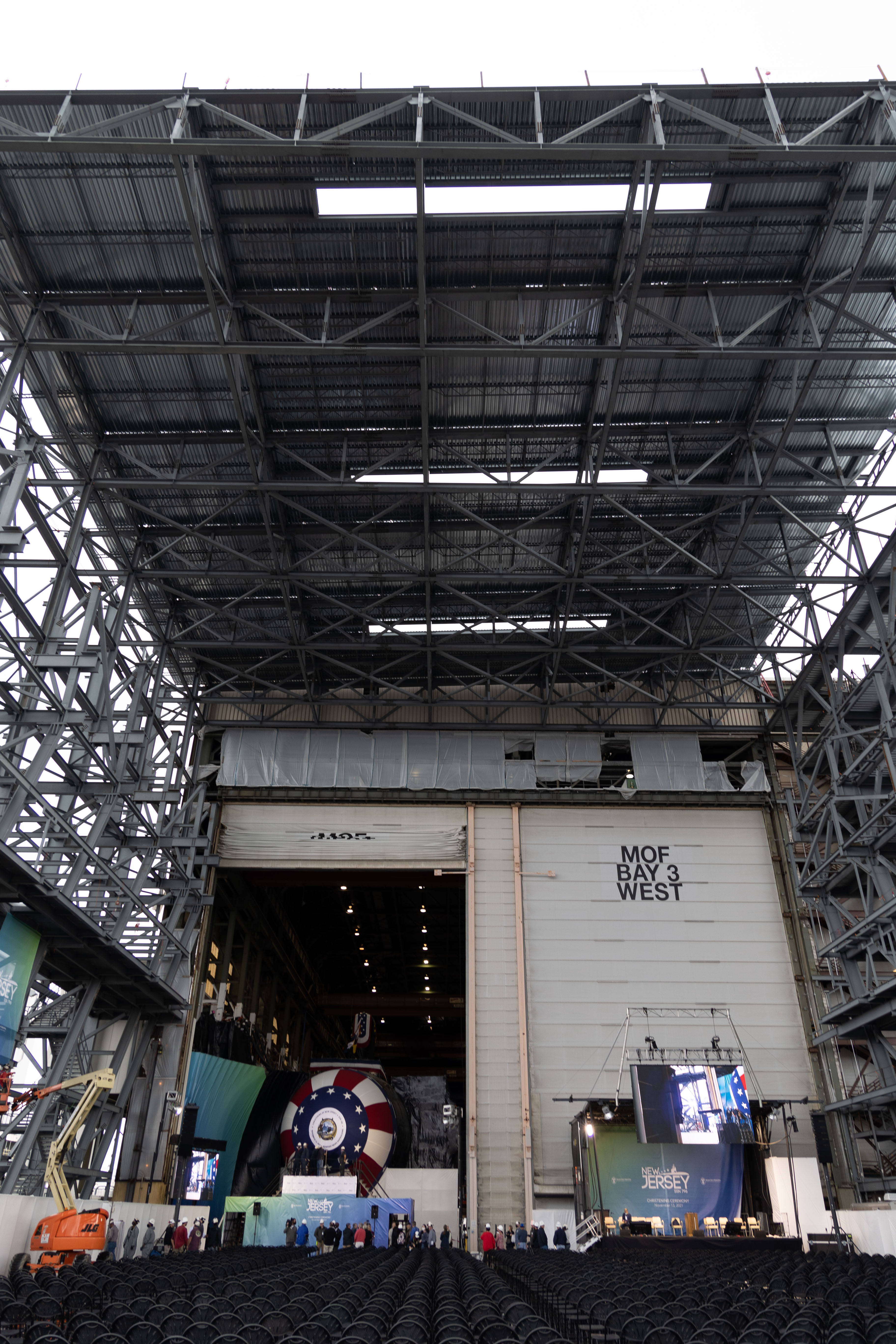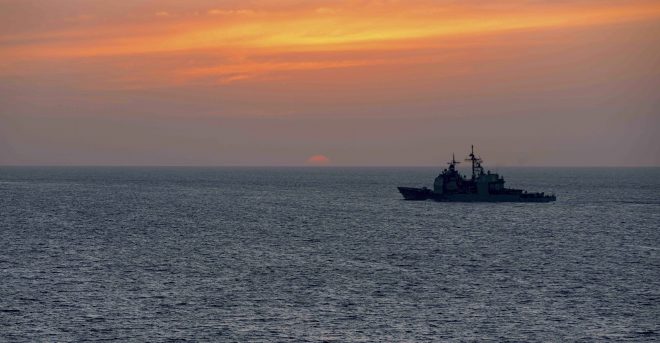Biden strategy could ensure China’s naval dominance
By DAVE MAKICHUK
MAY 31, 2021
If US President Joe Biden’s fiscal year 2022 budget request gains traction, it would increase the Navy’s topline budget but decrease the service’s shipbuilding funding — paving the way for China to become the world’s dominant navy.
According to documents released May 28, the Department of the Navy, which includes the Marine Corps and Navy, would receive a topline of US$211.7 billion which is a 1.8% increase from the enacted fiscal year 2021 budget of US$207.1 billion, National Defense reported.
However, the Navy’s shipbuilding account would decrease by a whopping US$700 million with the 2022 fiscal blueprint asking for US$22.6 billion. The request would keep the service’s overall ship number at 296.
The budget includes funds for eight ships: two Virginia-class fast-attack submarines, one Arleigh Burke-class destroyer, one guided-missile frigate, one fleet replenishment oiler, one ocean surveillance ship and two towing, salvage and rescue ships.
The Pentagon’s latest shipbuilding plan, released in December in the final weeks of the Trump administration, called for growing the fleet to 316 ships by 2026, 355 by the early 2030s and 400 by the early 2040s.
Deputy Assistant Secretary of the Navy for Budget Rear Adm. John Gumbleton said if the service continues the trend of purchasing eight ships a year, it will miss its goal of 355 ships by the early 2030s.
The Navy purchasing “eight ships a year is not going to get to 355,” he said during a press briefing with reporters.
“All things being equal, if you have a 300 ship Navy and a 30-year life, you have to recapitalize it 10 per year and so eight is not going to do it — that said we’re consistent with last year’s request of eight — we’re requesting eight this year again.”
Meanwhile, according to US Office of Naval Intelligence estimates, the People’s Liberation Army Navy possesses between 313 and 342 warships, National Interestreported.
But the PLAN accounts for only a fraction of China’s maritime power, according to Andrew Erickson, a professor at the US Naval War College.
“China’s armed forces comprise three major organizations, each with a maritime subcomponent that is already the world’s largest such sea force by number of ships,” Erickson writes in the Indo-Pacific Defense Forum.
Beside the PLAN, Beijing’s maritime organizations include the Chinese Coast Guard and the People’s Armed Forces Maritime Militia, or PAFMM.
The coast guard and maritime militia help the Chinese Communist Party to pursue its foreign policy goals, Erickson says.
“Not seeking war but determined to change the status quo coercively, Beijing employs its enormous second and third sea forces in so-called maritime gray zone operations to further its disputed sovereignty claims in the near seas (Yellow, East and South China seas).”
The coast guard and militia have grown alongside the PLAN, Erickson revealed.
“China’s second sea force, the coast guard, is … the world’s largest, with more hulls than those of all its regional neighbors combined: 225 ships over 500 tons capable of operating offshore and another 1,050-plus confined to closer waters, for a total of 1,275.”
New coast guard ships are much more sophisticated than the vessels they’re replacing.
“In terms of qualitative improvement, China has now replaced its older, less-capable large patrol ships,” Erickson wrote.
“It is applying lessons learned from scrutinizing the ‘gold standard’ US and Japanese coast guards, as well as the CCG’s increasing experience operating farther offshore for longer periods.
“The resulting new ship features include helicopters, interceptor boats, deck guns, high-capacity water cannons and improved seakeeping.”
Combined, the PLAN, coast guard and militia possess around 650 large vessels with military capabilities.
In addition to that fleet — which, by the way, is largely focused first and foremost on the contested near seas and their immediate approaches, close to Chinas homeland, missile coverage and supply lines — Chinese naval shipbuilding is progressing at breakneck speed.
China launched eight Type 055 large destroyers as of the end of 2020, after the first ship was launched on June 28, 2017, eastday.com reported.
The remaining six Type 055s are being outfitted or are in sea trials. They are expected to be commissioned in about one to two years, according to the pattern of warship construction, analysts said.
With a displacement of more than 12,000 tons, the Type 055 is a guided missile destroyer about 180 meters long, 22 meters wide and has a whopping 112-128 vertical launch missile cells capable of launching a combination of surface-to-air missiles, anti-ship missiles, land-attack missiles and anti-submarine missile.
The US Navy’s Arleigh Burke class by comparison houses just 96 missile cells. And like VLS cells that arm United States Navy ships, the Type 055’s cells could be used in the future to house more advanced hypersonic missiles.
To be certain, numbers alone do not paint a full picture and quantity is not a direct substitute for quality, analysts say.
The Type 055s, however, do appear to be qualitatively different: large, well-armed, and with some radar-mitigating features.
The Biden administration is proposing a total of US$715 billion for the Defense Department in 2022, National Defense reported.
That is US$11.3 billion, or 1.6%, more than was enacted for 2021. The increase is “slightly” less than the anticipated rate of inflation, according to the administration.
The investment plan comes as the US military casts a wary eye toward China and its military advancements, and the Defense Department moves to acquire next-gen capabilities.
“China poses the greatest long-term challenge to the United States,” according to the Pentagon budget proposal. “Accordingly, DoD will prioritize China and its military modernization as our pacing challenge.”
To that end, the Pentagon is “investing in cutting-edge technologies that will deliver new warfighting advantages to our forces,” it added. They include artificial intelligence, hypersonics, cyber and quantum computing, among others.
The department plans to spend over US$66 billion on efforts related to the Indo-Pacific region, including for the Pacific Deterrence Initiative, also known as PDI.
That includes US$5.1 billion in targeted investments aimed at developing and procuring capabilities in support of “joint force lethality,” including precision strike and stand-off systems such as advanced munitions.

Biden strategy could ensure China's naval dominance - Asia Times
If US President Joe Biden’s fiscal year 2022 budget request gains traction, it would increase the Navy’s topline budget but decrease the service’s
 asiatimes.com
asiatimes.com










